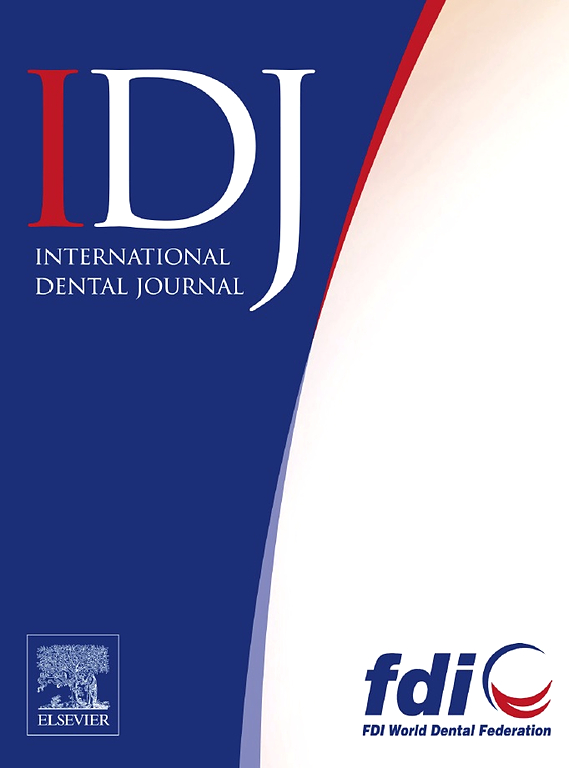Chemotherapy-Induced Peripheral Neuropathy Impairs Tertiary Dentine Formation: An In Vivo Study
IF 3.2
3区 医学
Q1 DENTISTRY, ORAL SURGERY & MEDICINE
引用次数: 0
Abstract
Introduction and aims
Chemotherapy-induced peripheral neuropathy (CIPN) is a common and well-documented adverse effect of chemotherapy, primarily targeting sensory nerves. Sensory nerves play a crucial role in the repair of dentine-pulp complex injuries. Despite this, the influence of CIPN on the repair processes of the dentine-pulp complex remains largely unexplored. This study aims to investigate the effects of paclitaxel-induced CIPN on tertiary dentine formation following dental injury, offering new insights into the connection between chemotherapy and dental tissue regeneration.
Methods
Male C57BL/6J mice received paclitaxel (PTX, 35 mg/kg) intraperitoneally to model CIPN. Mechanical withdrawal threshold (MWT) was tested with Von Frey filaments, and intraepidermal nerve fiber (IENF) degeneration was assessed using immunofluorescence for CIPN validation. Dental pulp analyses included peripheral nerve fiber density, Calcitonin Gene-Related Peptide (CGRP) levels, and odontoblast apoptosis, evaluated via immunofluorescence and TUNEL staining. Effects on trigeminal neurons and neuropeptide production were analysed using immunofluorescence for activating transcription factor 3 (ATF3) and CGRP. Tertiary dentine formation was evaluated histologically using H&E staining and Masson's trichrome.
Results
PTX treatment reduced paw mechanical stimulation thresholds. IENF density decreased by nearly 50% post-paclitaxel. CGRP-positive nerve fibers in the dental pulp were notably reduced in PTX-treated mice. Histology showed substantial reductions in tertiary dentine formation in the CIPN groups. PTX did not cause odontoblast apoptosis or damage trigeminal neurons but reduced CGRP in dental pulp nerve endings.
Conclusion
PTX impairs neuropeptide transport and release in dental sensory nerves, affecting tertiary dentine formation. These findings offer key insights into CIPN’s neurotoxic effects, with implications for dental pulp repair and regeneration.
Clinical Relevance
Paclitaxel-induced peripheral neuropathy reduces tertiary dentine formation following dental injury. These findings suggest that chemotherapy patients may face compromised dental repair, emphasising the need for tailored dental management and monitoring of oral health during cancer treatment.
化疗诱导的周围神经病变损害三级牙本质的形成:一项体内研究
化疗诱导的周围神经病变(CIPN)是一种常见且有充分证据的化疗不良反应,主要针对感觉神经。感觉神经在牙本质-牙髓复合损伤的修复中起着至关重要的作用。尽管如此,CIPN对牙本质-牙髓复合体修复过程的影响在很大程度上仍未被探索。本研究旨在探讨紫杉醇诱导的CIPN对牙损伤后第三牙本质形成的影响,为化疗与牙组织再生之间的联系提供新的见解。方法C57BL/6J小鼠腹腔注射紫杉醇(PTX, 35 mg/kg)模型CIPN。用Von Frey纤维检测机械戒断阈值(MWT),用免疫荧光法评估表皮内神经纤维(IENF)变性,以验证CIPN。牙髓分析包括周围神经纤维密度、降钙素基因相关肽(CGRP)水平和成牙细胞凋亡,通过免疫荧光和TUNEL染色进行评估。利用免疫荧光法检测激活转录因子3 (ATF3)和CGRP对三叉神经细胞和神经肽产生的影响。采用H&;E染色和马松三色法对三级牙本质形成进行组织学评价。结果sptx治疗降低了足跖机械刺激阈值。紫杉醇后IENF密度下降了近50%。ptx处理小鼠牙髓中cgrp阳性神经纤维明显减少。组织学显示CIPN组的三级牙本质形成明显减少。PTX不引起成牙细胞凋亡或三叉神经损伤,但降低牙髓神经末梢的CGRP。结论ptx损害牙感觉神经神经肽的转运和释放,影响第三牙本质的形成。这些发现为CIPN的神经毒性作用提供了关键的见解,并对牙髓修复和再生产生了影响。临床意义:紫杉醇诱导的周围神经病变可减少牙损伤后三级牙本质的形成。这些发现表明,化疗患者可能面临牙齿修复受损,强调需要在癌症治疗期间进行量身定制的牙齿管理和口腔健康监测。
本文章由计算机程序翻译,如有差异,请以英文原文为准。
求助全文
约1分钟内获得全文
求助全文
来源期刊

International dental journal
医学-牙科与口腔外科
CiteScore
4.80
自引率
6.10%
发文量
159
审稿时长
63 days
期刊介绍:
The International Dental Journal features peer-reviewed, scientific articles relevant to international oral health issues, as well as practical, informative articles aimed at clinicians.
 求助内容:
求助内容: 应助结果提醒方式:
应助结果提醒方式:


